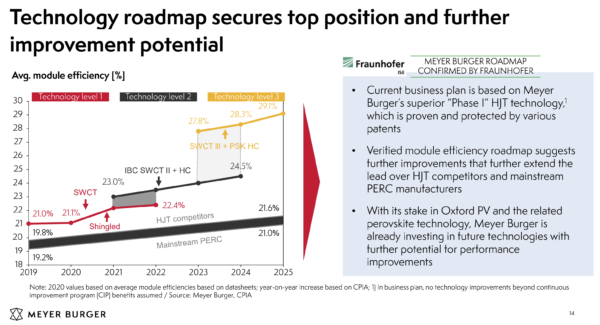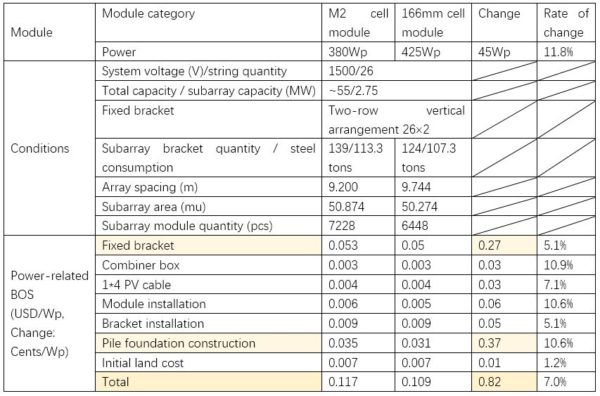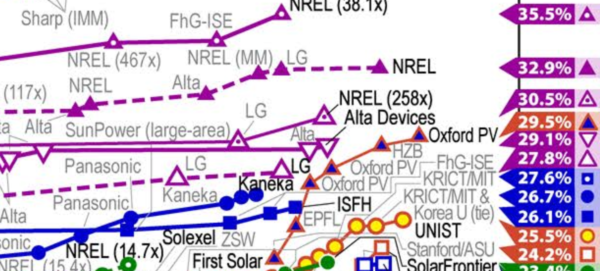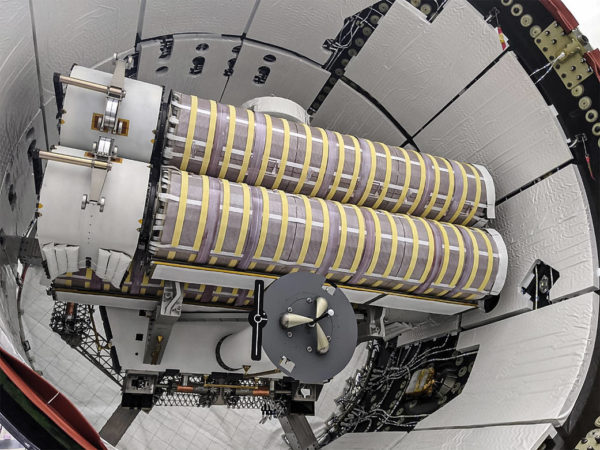In its last quarterly earnings report, MeyerBurger noted that its 27%+ efficient perovskite-silicon tandem solar panel would potentially hit the market in 2023. The solar cell in this panel has already been tested at 29.52%.
In late June, JinkoSolar noted in its quarterly earnings report that it expects to successfully test a laminated perovskite solar cell over 30% efficiency by the end of the year. The company also said it had completed the construction of a “high-efficiency laminated perovskite cell technology platform.”
 Also in late June, 1366 Technologies merged with Hunt Perovskite Technologies with a goal of offering a perovskite-silicon tandem solar cell whose efficiency is 30% greater than the best solar cells on the market.
Also in late June, 1366 Technologies merged with Hunt Perovskite Technologies with a goal of offering a perovskite-silicon tandem solar cell whose efficiency is 30% greater than the best solar cells on the market.
A reminder: 1366’s CEO told pv magazine USA just six months ago:
In fact, not only do I believe that multiple gigawatts of tandem will be sold before the end of 2022, I am also confident that in a decade’s time, tandem will command more than 50% of our industry’s market share.
The more tempered members of our industry remind us, though, that historically speaking, scaling up solar panel technology from lab to market takes decades.
One professional wondered what JinkoSolar’s “technology platform” really is, and whether it’s appropriate for investors to consider it seriously yet. And another industry watcher expects the 1366 Technologies’ prediction of multiple gigawatts of tandem cell manufacturing capacity in place before the end of next year to fall flat.
This author won’t let any of that rationality dampen our excitement.
Efficiency makes the price of everything go down
The greatest benefit of increased solar panel efficiency is that on a per-watt and per-kilowatt hour basis, everything is cheaper.
 In the image above, created by LONGi Solar, there is a comparison between a 380 Watt solar panel and a 425 Watt unit. The units are the same size, but the 425 Watt model has 11.8% more wattage, due to improvements in efficiency. A 380 Watt model found online – LR6-72HPH-380M – had a 19% efficiency.
In the image above, created by LONGi Solar, there is a comparison between a 380 Watt solar panel and a 425 Watt unit. The units are the same size, but the 425 Watt model has 11.8% more wattage, due to improvements in efficiency. A 380 Watt model found online – LR6-72HPH-380M – had a 19% efficiency.
Note that in the rate-of-change column, hardware and land savings total 7% when shifting from a 380 Watt to the 425 Watt unit on a 1 MW ground-based power plant.
Now imagine that we have a 30% efficient solar panel: that’s a 57% increase in electricity production over the 380 Watt unit. For the sake of simplicity, we’ll pretend benefits scale linearly with the LONGi comparison above. That means the 7% system savings turns into almost 35% savings.
These construction cost savings generally scale with electricity cost savings. Solar is already being proclaimed king of cheap energy generation. If we knock another 35% off construction costs, exclusively from improvements to solar panel efficiency, that’s some pretty sweet icing on the cake.
Broader benefit
Three additional benefits result from breakthroughs in solar panel efficiency. First, local land savings results in a reduction in local pushback. Second, lower carbon footprint results from reduced equipment, transport, and labor needs. And of course, a massive boost to efficiency would certainly reinvigorate the spirit of the entire solar industry, for a third benefit.
 The first two benefits are straightforward. For instance, pv magazine USA covered the fight to build what was the largest solar power plant east of the Rockies in 2019.
The first two benefits are straightforward. For instance, pv magazine USA covered the fight to build what was the largest solar power plant east of the Rockies in 2019.
This fight highlighted that while solar is as popular as apple pie, there has still been a drop in its popularity due partially to agricultural and rural pushback. It also revealed concern about the environmental aspects of manufacturing massive amounts of polysilicon, and the subsequent recycling of those solar panels.
If land use is reduced by one-third and electricity used to manufacture is also reduced by one-third, then it seems logical to assume that the pushback should drop off to some degree as well.
Do solar scientists dream of efficiency records?
This image is from the National Renewable Energy Laboratory’s (NREL) Best Research-Cell Efficiency Chart. Many readers know this chart not because it is directly applicable to their lives, but because it’s just so darn cool to see the blistering progress that solar technology has achieved in recent years.
 Records are cool, lasers that beam energy to specialized solar cells are cool, and even carbon-nanotube solar pipe dreams are cool (even if we never figure out how to manufacture them) because that’s simply how life, and innovation, works.
Records are cool, lasers that beam energy to specialized solar cells are cool, and even carbon-nanotube solar pipe dreams are cool (even if we never figure out how to manufacture them) because that’s simply how life, and innovation, works.
If – or, more likely when – the solar manufacturers of the world sort out the manufacturing challenges behind tandem perovskite+silicon solar cells, it will open a clear path towards 34-35% efficient solar cells (the current speculative peak efficiency value of this product).
Already multi-layered solar cell products are common in expensive markets – the International Space Station for instance – but it is still too expensive for practical surface-based electricity generation.
We will finally see multijunction high efficiency products for the common person.

Image: Redwire
Of course, multi-layered products are currently available for purchase. Panasonic’s HIT goes way back, and REC’s Alpha product was released less than two years ago. But these products haven’t yet fulfilled the promises of our efficiency dreams.
Those efficiency dreams, without a doubt, lie deep within the minds of Fraunhofer’s and NREL’s researchers, as we can see from the aforementioned 68.9% solar cell which absorbs laser blasts, or the 47.1% six layer solar cell which is manufactured with surprisingly achievable technologies.
As our planet experiences record heat waves as a result of carbon emissions, killing our most vulnerable, it’s nice to have something to dream about.
The views and opinions expressed in this article are the author’s own, and do not necessarily reflect those held by pv magazine.
This content is protected by copyright and may not be reused. If you want to cooperate with us and would like to reuse some of our content, please contact: editors@pv-magazine.com.








And these tandem silicon/perovskite modules will just be the proverbial “foot in the door.” Once perovskites are a proven technology, we’ll see laminated perovskite modules for pennies a watt that be plastered almost anywhere. The future can’t get here soon enough!